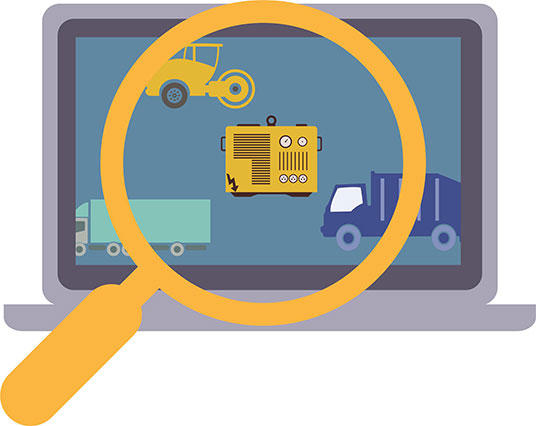Simon Keam-George, CEO at Enigma Telematics
Aggressive competition and tightening regulatory requirements are pushing the construction industry to find new strategies that increase performance with calculable returns on their investments.
One major area offering massive potential for significant savings is construction equipment. After all, equipment budgets involve far more than an initial purchase price. Construction managers also have to consider costs incurred by routine upkeep, unpredicted breakdowns and maintenance costs.
Coordinating and managing these aspects – especially for a large construction fleet spread over various regions – is not an easy task.
Thankfully analytics and automation tools have progressed significantly in recent years and nowadays construction managers and contractors can use advanced telematics solutions to gain valuable insight of fleet operations, maintenance, and management; thus empowering them to identify and address cost inefficiencies caused by the under or over utilisation of equipment.
The main areas where telematics can enable managers and contractors to make cost saving decisions are fleet optimisation, improved security and back office efficiency.
Fleet optimisation
As fuel prices are on the rise, reducing usage is a significant area of interest for fleet managers. With telematics, managers can better monitor and manage fuel spend by keeping track of overloading, under/over equipment utilisation and fuel theft.
Ensuring that each piece of equipment is being used to its full potential is another challenge that constructors can tackle. They can easily track asset idleness and run time, identifying in this way which machines are no longer necessary and can be unloaded or moved to a different site. At the same time, fleet managers can quickly spot when certain pieces of equipment are overused or presenting higher wear and tear, therefore triggering proactive maintenance to avoid unplanned downtime caused by equipment failure.
By providing accurate diagnostic information and real-time visibility into equipment health, telematics enables contractors to reduce unnecessary maintenance and improve scheduling.
An important element that would be very difficult to track without telematics are CO2 emissions generated by machinery. In this way, the company can plan in advance its environmental strategy and ensure it complies with relevant laws and regulations.
Health and safety is also a critical priority for construction managers. With remote access control, managers can specify who can access specific machinery, ensuring that only trained workers can operate certain types of equipment.
Security
According to the Plant and Agricultural National Intelligence Unit of the Metropolitan Police (PANIU), over the first six months of 2017 over 1,000 items of construction equipment were stolen. The organisation’s investigations reveal that thieves are targeting mini excavators, dumpers and tractors. Thefts can have widespread implications for contractors and hirers besides the significant financial loss that they face when the machinery is stolen. Additional factors that have to be considered; the cost of downtime, possible loss of customers and potential delays in delivering on contracted projects.
To combat these impacts telematics plays a pivotal role in the event of a theft as fleet managers are able to quickly track the location of their machinery, alert the authorities and recover equipment in a short period of time.
Another benefit is that the data relating to equipment health as well as location tracking enables contractors to negotiate lower insurance premiums and optimise their fleet operations decreasing their overall running costs.
Back-end efficiency
Finally, telematics solutions eliminate significant amounts of paperwork and enables quick and simple worker identification and timesheet validation. This streamlines the administration process and increases overall efficiency.
With automated reports and remote access insight on every piece of equipment, organisations can save time and resources, ensuring that employees focus on more important activities such as moving projects forward and delivering on target and budget.
Despite all these benefits telematics adoption rates are still at a low 15-20%. However, as technology evolves and customers become increasingly demanding a significant number of constructors and contractors are realising that they need to take advantage of these solutions if they are to thrive and stay ahead of the competition.


